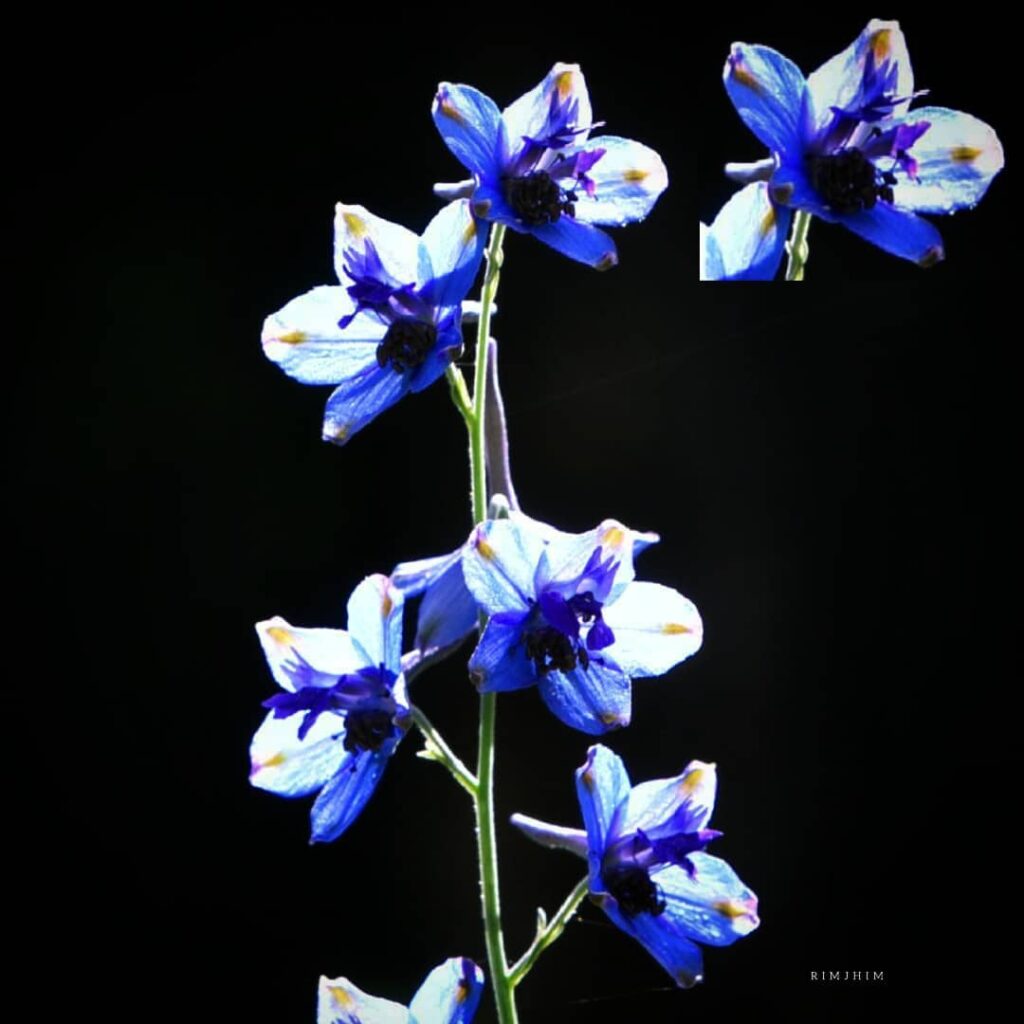Taxonomic Hierarchy
Kingdom | Plantae – plantes, Planta, Vegetal, plants | ||
| Subkingdom | Viridiplantae – green plants | ||
| Infrakingdom | Streptophyta – land plants | ||
| Superdivision | Embryophyta | ||
| Division | Tracheophyta – vascular plants, tracheophytes | ||
| Subdivision | Spermatophytina – spermatophytes, seed plants, phanérogames | ||
| Class | Magnoliopsida | ||
| Superorder | Ranunculanae | ||
| Order | Ranunculales | ||
| Family | Ranunculaceae – buttercups, boutons d’or, crowfoot | ||
| Genus Species | 𝘿𝙚𝙡𝙥𝙝𝙞𝙣𝙞𝙪𝙢 L. – larkspur 𝙧𝙤𝙮𝙡𝙚𝙞 |
Local name: Mori, Royle’s Larkspur
Royle’s Larkspur is a herb 0.5-1 m tall, with stem simple or with a few branches, densely bristly. Sepals are deep blue, bristly, upper sepal 1.3-1.4 cm x 8-9 mm, pointed, spur 1.5-1.6 cm long, 3-3.5 mm wide at base, cylindric, horizontal, lateral sepals broadly elliptic-ovate, obtuse, 15 x 16 mm, lower sepals 15-16 x 8-9 mm, subovate, pointed. Upper petals pale, lamina glabrous, oblique, 8 mm long, shallowly bidentate, spur 14 mm long, lower petals with deep blue, bearded, roundish lamina 6 mm long, lobed for 3 mm, claw 5 mm long. Stamens 5-7 mm long, subglabrous. Stalks of lower leaves are about 10 cm, blade 5-8 cm in diameter, palmately multiply-cut, segments wedge-shaped, sharply incised, with lobes 1.5-3 mm wide, pointed, upper leaves smaller, shortly stalked to subsessile. Inflorescence is composed of a long, dense central raceme and few short looser lateral racemes. Bracts linear, 5-10 mm long, pedicels 10-25 mm long, recurved at apex, bracteoles 2.5-3 mm, near base of pedicel. Follicles 3, strigose, 10-15 x 3-4 mm wide. Seeds 1 mm long, 3-angled, usually with 5 rows of scales. Royle’s Larkspur is found in Pakistan and Kashmir.
Flowering: July-August.
Ethnomedicinal uses: Seeds are used as insecticide and treatment of skin eruptions.

Delphinium roylei Munz.
Leave a Reply